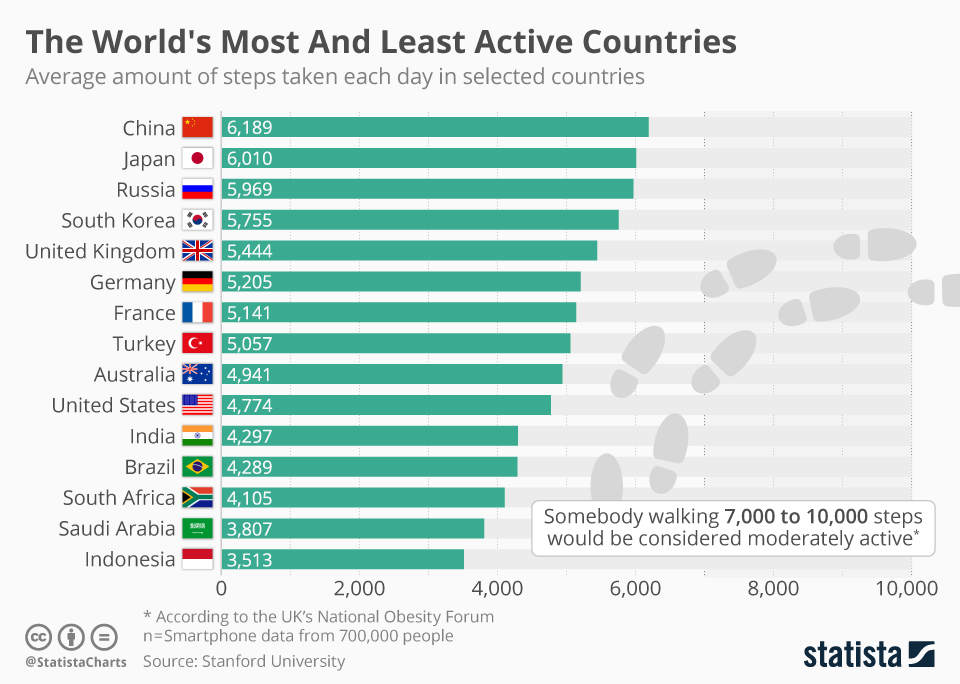Walking is the most environmentally friendly mode of transportation. Walking develops our strengths and muscles. It produces almost no noise or pollution and utilizes significantly fewer nonrenewable resources than other transportation. Walking requires energy provided directly by the traveler, and using that energy provides a beneficial cardiovascular workout.Â
Walking takes up a fraction of the space required to drive and park a car. Walking at a young age will benefit you in your old age, and walking is the secret to a longer life. Furthermore, walking is cost-effective in terms of direct user expenditures and public infrastructure investments; it is significantly less expensive than driving a car or taking public transportation. Walking is the most equitable means of transportation because it is cheap for almost everyone.
The average American walks around 3000 to 4000 steps or roughly 1.5 to 2 miles daily. It is a good idea to find out how many steps you walked by using a pedometer or walking app. Then you can set a goal of 10k steps by aiming to add 1000 extra steps a day every two to three weeks. If you already easily walk 10k steps daily or are trying to lose weight, you probably want to set the steps goal higher.
Walking is a popular mode of transportation for short distances. As a result, assessing pedestrian mobility at the country level is problematic, as national travel surveys frequently overlook shorter excursions. In addition, the walking portions of trips done primarily by public transportation are commonly overlooked. As a result, the value of walking is currently undervalued.
 You will find more infographics at Statista
You will find more infographics at Statista
The researchers looked at a dataset that included 717,527 users from 111 countries who used the smartphone app, Argus, to track their physical activity, with an average period of 95 days per user. Users' names were deleted from the app, but researchers were given demographic information such as age, gender, height, and weight.
Hong Kong wins for the most steps taken daily, with the typical resident completing 6,880 steps. China came in second with 6,189 steps. On the other hand, Malaysia, Saudi Arabia, and Indonesia had the fewest average daily steps, with 3,963 steps, 3,807 steps, and 3,513 steps, respectively. With an average daily step count of 4,774, the United States is in 30th place.
The researchers discovered global activity imbalance or significant differences between active and idle persons within a country's borders. They found that a country's degree of activity disparity is substantially linked to its obesity rate. Inequality predicts obesity better than the average national step count.
According to the researchers, the physical environment also matters since more walkable towns raised walking rates across all age, gender, and BMI groups. If their settings were adapted for pedestrians' requirements, females, in particular, demonstrated considerable walking increases.
Cities must prioritize pedestrian Safety, convenience, culture, and comfort to make walking desirable. This is quite simple in engineering, but it can be politically difficult due to opposition from groups who expect to be severely impacted. Here are some ways your city can make it work.Â
When you are ready to take up walking, here are a few points you need to consider to ensure it's good enough exercise.
Once you are done with your exercise, it is essential to stretch your muscles. This will help you through the fully completed workout phase.
Walking is an essential component of long-term wellness. According to the World Health Organization, physical inactivity is now the fourth most significant risk factor for worldwide death. In many nations, increased levels of inactivity are linked to large-scale issues such as aging populations and unplanned, un-walkable urbanization.Â
Walking can be a good low-impact exercise, whether walking around the area where you live in the evenings with your family or alone at the gym. Remember, an exercise program you can stick with is more effective than the best.Â
For many people, All should ensure that walking is promoted for the benefit Especially older people or people suffering from any issues. Walking is very much necessary for a healthy lifestyle.
Infographic: The World’s Most And Least Active Countries. (n.d.). Statista Infographics. https://www.statista.com/chart/10357/the-worlds-most-and-least-active-countries/